Last Updated on: February 5, 2025
Even glancing out your window will give you a spectacular view of different birds, especially if you have one overlooking your garden. Birdwatching is technically watching birds, but there are many different ways to do it.
But…
When walking around the boardwalk at Barr Lake, do you wonder about the birds in Colorado you might encounter there? Or does it ever concern you how to identify the common backyard birds at your feeders?
Please continue reading as we discover more about our feathered friends so your wildlife adventure will be more enjoyable and memorable.
The Most Common Backyard Birds in Colorado
Colorado forests have supported a significant number of resident and migratory bird populations all through the years. The state is rich in coniferous and aspen forests, home to various bird species, most of which are conservation priorities.
Colorado has an excellent geographical position; even hearing its name will remind people of its unique outdoor lifestyle. The region is undoubtedly rich in its biodiverse habitats, from the alpine meadows to the lofty peaks.
The region is undoubtedly rich in its biodiverse habitats, from the alpine meadows to the lofty peaks. As such, birders around the globe never run out of birding hotspots within the area. Some will even come to witness the spring migration on the western slope.
Let us help you discover Colorado’s abundant avifauna by identifying the most common backyard birds across the region better and more conveniently. Here are some of them:
1. Eurasian Collared Dove
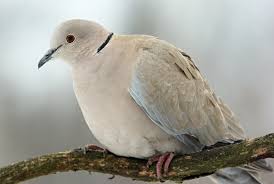
Despite being a non-native bird to Colorado, the Eurasian collared dove now started making an appearance across the region. This invasive species originated from the Bahamas and has spread across the United States in the past decade.
In 2014, there was a documented sighting of Eurasian collared doves in Denver.
Many people find its calls annoying, a screeching sound similar to a nasal shriek or a loud hiss. The Eurasian collared dove features a plump body, with chalky light brown overall and buffish grey undertail coverts. It also shows a white-bordered black collar on the hindneck.
Eurasian collared doves like feeding on the ground and primarily dwell in towns, cultivated lands, and field edges. However, you can almost see a Eurasian collared dove anywhere grains are available, like on farms and livestock backyards.
2. Black-Capped Chickadee
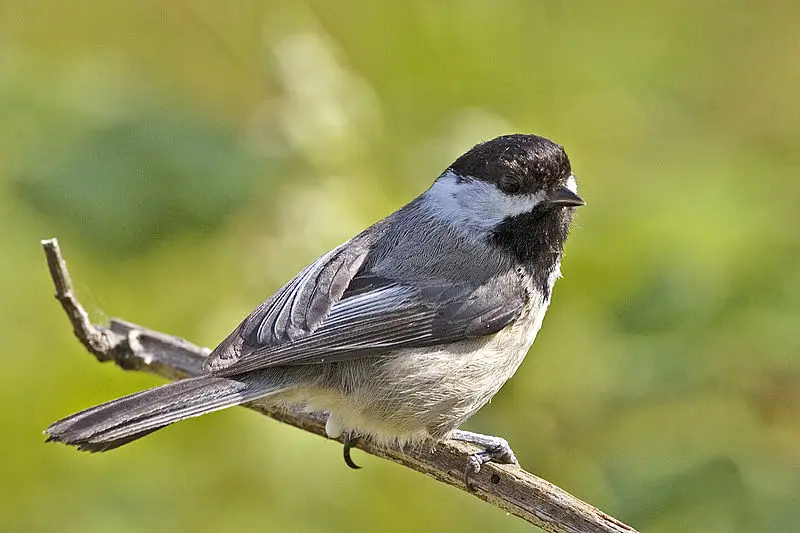
The black-capped chickadee is among the undersized birds in Colorado, which is prominent in several areas in the continent’s northern half. You can see this Paridae family member around the state year-round, although this species rarely visits backyard feeders.
Nevertheless, this chickadee likes foraging trees and bushes for insects and their eggs, while it prefers seeds in winter.
Black-capped chickadees are readily recognizable with their gray upperparts and light gray to dusky shade underparts. The bird’s black cap and throat patch provide contrast to its gray plumes.
Such a bird is well-loved by many due to its tame personality. Black-capped chickadees are fond of acrobatic displays and enjoy joining flocks. Residential neighborhoods, parks, and deciduous,
mixed and coniferous forest edges are this chickadee’s preferred habitats.
The bird’s preference for high or low elevations depends on the species in question; black-capped chickadees dwell in spruce-fir forests in New York. On the other hand, these attractive bird inhabits the pinyon-juniper forests in Colorado.
3. House Finch
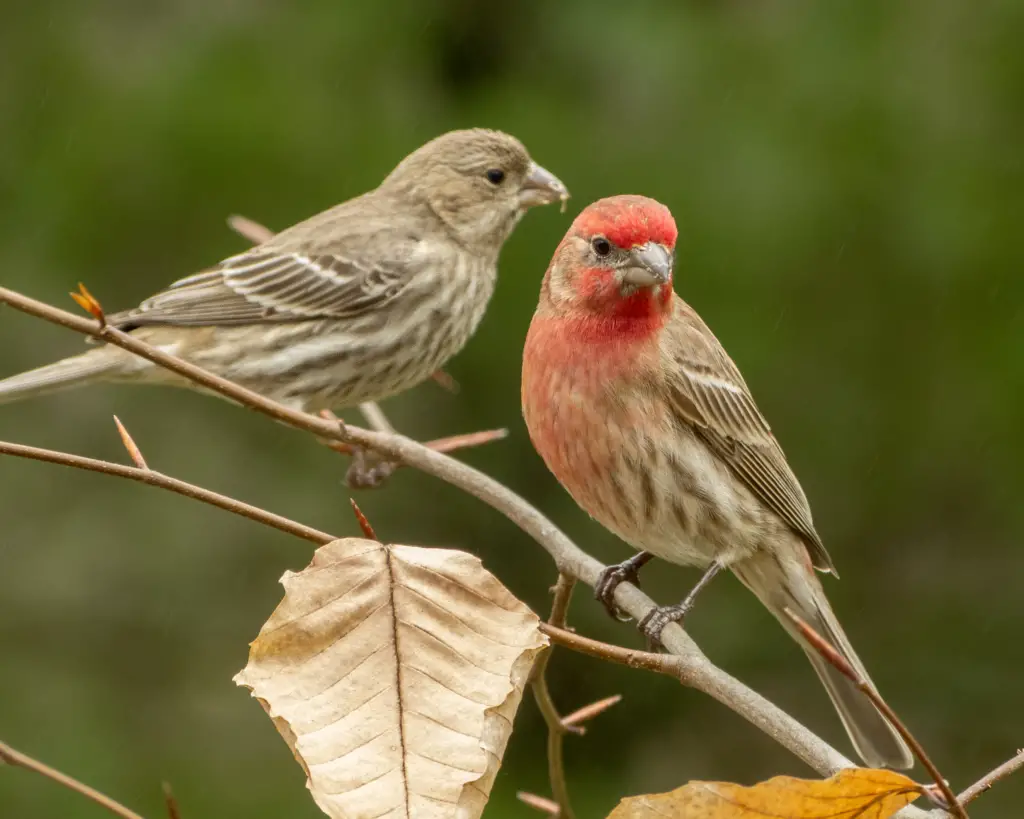
The house finch originally came from the western regions until its successful introduction to eastern North America in 1941. Nowadays, it is a widespread species throughout the country.
Despite its seemingly long, flat head, it is among the small birds with sizable bills.
House finches have short wings, making their tail look longer. The bird’s look can sometimes vary depending on its region-based diet, including seeds, insects, and fruit. Several birders often confuse this fairly common bird with the purple finch.
Male adult finches are dark brown above with bold streaks and light brown underneath. Females are generally gray-brown with blurry lines up to their bellies, while juveniles show a similar brownish gray shade.
While the male’s head appears brick red during the breeding season and pinkish during the non-breeding season, it can appear bright yellow in other regions. Likewise, its scarlet shade can go redder depending on the bird’s diet.
You will notice an abundance of house finches population in bird feeders, where they mainly feed on grains, seeds, and berries. If you like to attract birds like this house finch, try having some hummingbird feeders, or plant a creeping juniper for their nesting and roosting needs.
You might even notice this creature weaving its basket-like nest in an obscure Virginia creeper by the foliage. Best of all, fill your bird feeders with millet and black oil sunflower seeds and provide nest boxes, so these finches keep returning to your backyard.
Otherwise, you will see this creature frequenting and socializing with other birds in city parks, backyards, urban areas, farms, and forest edges. In western regions, you may also see the house finch in deserts, grasslands, chaparrals, and open woods.
4. Mourning Dove
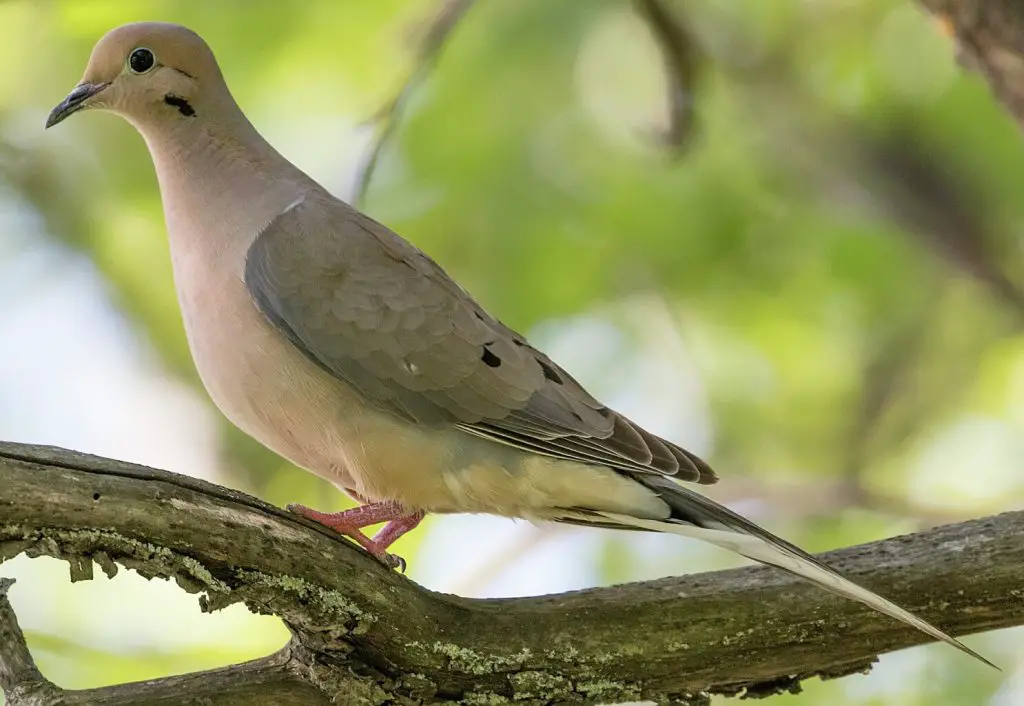
The mourning dove is another mid-sized bird in the state that is also highly adaptable. Such a dove can thrive well in any environment, but it is more common on farms and in the suburbs.
Mourning doves have two subspecies; the eastern variant, a sizable grayish-brown bird, and the western variant, a smaller and paler bird.
But generally, a mourning dove is plump-bodied with a long pointed tail, and its legs and toes are pink. The bird also has black-spotted wings, and its outer tail feathers have black-bordered white tips.
On the other hand, female mourning doves look paler; their neck is less iridescent, and the head is a light shade of gray too. These doves are habitants of parks, suburbs, farmlands, brushy areas, deserts, and woodlands but prefer roosting in woodlots during winter.
If you live near such an environment, you can expect to hear this dove’s melancholic call that sounds like lamenting coos. Aside from its call, its wings make a sharp whistling or whinnying sound when in flight.
Ground foraging is typical for a mourning dove hunting for black oil sunflower seeds, insects, and nuts. Many observers also notice this dove visiting a bird feeder.
5. European Starling
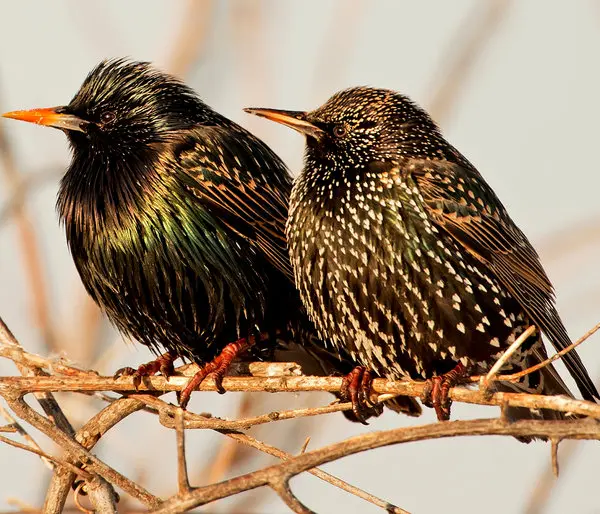
The European starling from the order of Passeriformes and Sturnidae family is also a familiar sight in Colorado. The bird is about the same size as the American robin, only slightly smaller and more sizable than the sparrows.
Starlings have chunky bodies and might appear plain black when viewing them from a distance.
But at a close range, you will notice that a starling has an iridescent black plumage with a greenish or purplish sheen. The iridescent plumage and the yellow bill are more prominent for the breeding starling.
While in winter, European starlings display a plain black shade with white spots and a black bill. Such is a highly adaptable but aggressive bird, well-known for competing and winning over native species for nesting sites.
Some even find it surprising that the sizable Northern flickers rarely win against the starlings. This domineering personality of a starling is why many people despise its presence, even as the bird tries to compensate with its impressive aerial maneuvers.
These creatures enjoy traveling in large flocks with other species like the red-winged blackbirds and common grackles. Additionally, the starlings have a diverse musical repertoire of rattles and trills, even mimicking the sounds of different species and mechanical sounds.
Invertebrates and insects make up most of the starling’s diet. Occasionally, it will feed on berries, grains, peanuts, bread, and other scraps from bird feeders. Such diet preferences provide the starlings with necessary energy in winter when the food sources are scarce.
You will find these birds almost anywhere, from urban parks, rural fields, dumps, gardens, and farmlands. The starling is also adaptable in its choice of nests, using a natural or artificial cavity, whichever of the two is available.
6. House Sparrow

Unlike the other bird species mentioned, there are creatures that you would never want to see using your nest boxes. The house sparrow is one of these birds, next to the European starling.
Many bird lovers consider house sparrows and European starlings pests, evicting them at the first sign of trying to build their nests.
These birds are well-known for killing an incubating barn swallow and bluebird on the nest. But of the two birds, the house sparrow is the most troublesome as it even throws out eggs and robs nests. It can easily fit birdhouses with a 4cm-entrance hole.
To identify this sparrow, you must know that it frequents urban environments and rural pastures but never in undisturbed forests and grasslands.
While the species have several geographic variations, the birds native to North America almost look the same, except that birds from the arid Southwest are paler. On the contrary, house sparrows from the wetter regions appear darker.
Generally, males have brown and black streaks on their upper parts, a black mask, and a dark gray crown. Underneath, the bird has a lighter shade, and the male loses its dark breast patch during the colder months.
You may also spot this bird while taking handouts from humans in zoos and state parks. Stale white bread is like a beacon to the house sparrow. Otherwise, these creatures might be perching on your backyard tree or exploiting the bird feeding station.
7. Broad-Tailed Hummingbird
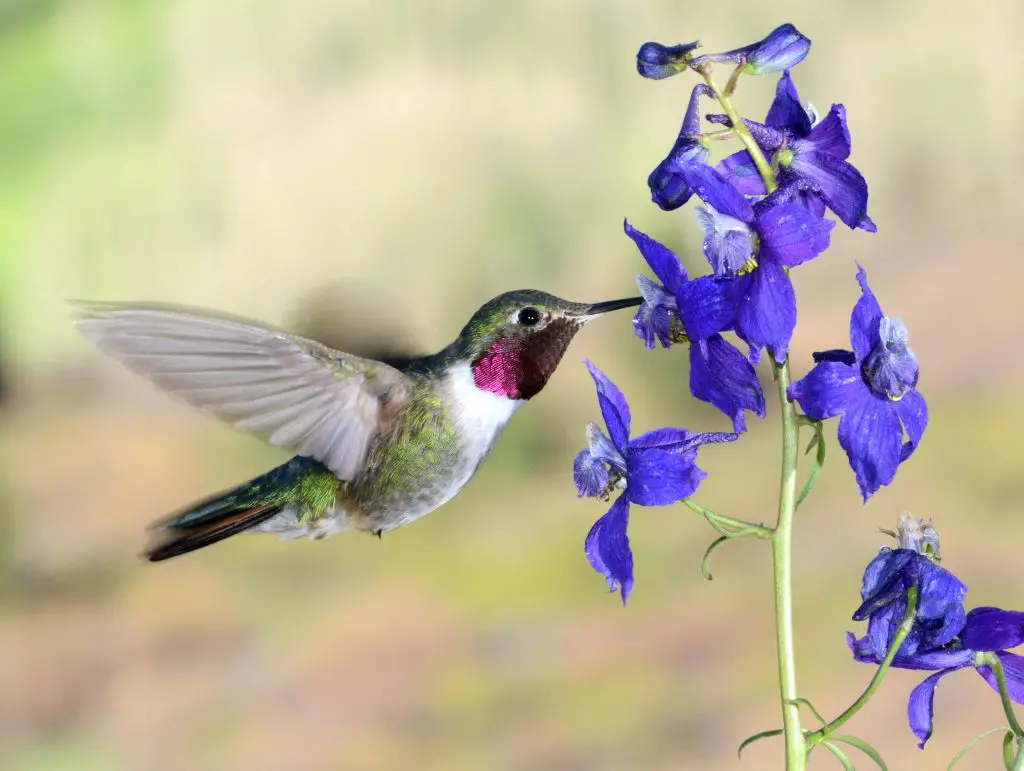
Despite being medium-sized birds, broad-tailed hummingbirds have slender bodies, sizable heads, and long straight bills with extended tails longer than their wingtips when perching.
It shows an iridescent green shade above, ruby-colored throat, and green buffy flanks. Females and young males are comparatively dull-looking except for their rufous, green, black, and white banded tails.
The male broad-tailed hummingbird is well-known for the silvery trill it creates when in flight due to its outer wing feathers.
Such a sound is iconic in the southern and central parts of the Rocky Mountains during summer and spring. The broad-tailed hummingbird is also migratory, appearing in Colorado between March and September; it spends the colder months in Central America.
The bird prefers high-elevation woodlands, mainly pine and juniper forests or riparian and oak standing near streams.
Furthermore, this hummingbird’s diet consists of annual and perennial flowers and willow sap from wells that sapsuckers drill. Otherwise, you may see this hummer hunt flying insects and small invertebrates.
8. Blue Jay
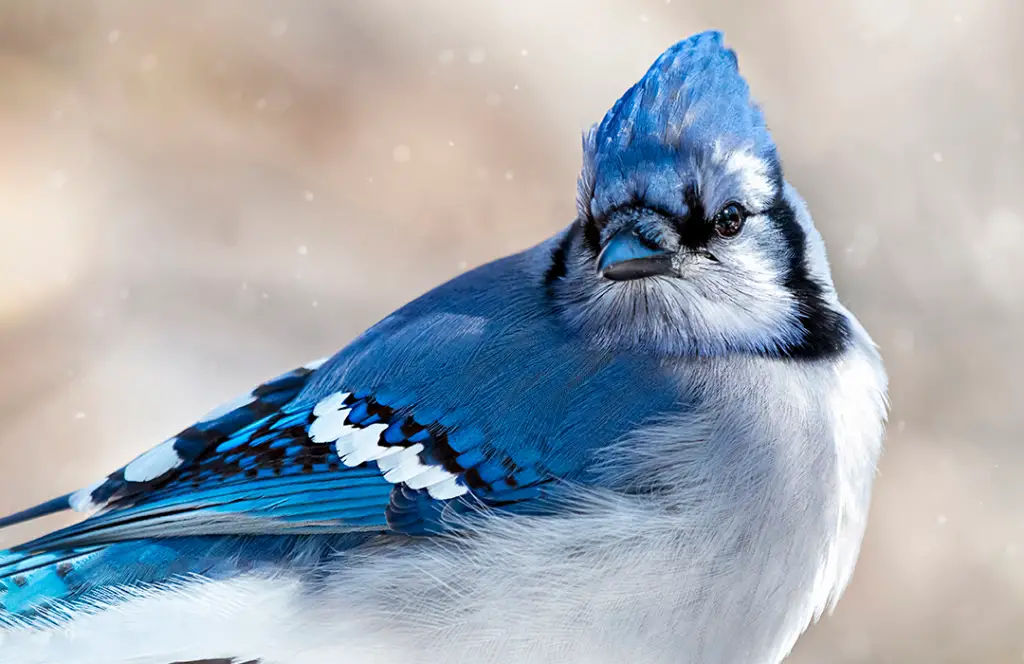
The blue jay is that prominently crested bird, eye-catching in its beautiful plumage. Its upperparts are blue, the underparts are white, with a white patch extending to the chin, and bordered with a black necklace.
In addition to these attractive features, blue jays have tapered black bills, black-barred wings, and tails with bold white spots.
But as handsome as it is, the blue jay has an undesirable reputation, especially in backyard feeders. Blue jays are annoyingly loud and aggressive, whether they forage alone or in pairs. Such birds may even form small flocks once the breeding season’s over.
The blue jay has an extensive range of long-distance calls and does most of its vocalization while perching in a tree. It sometimes imitates the calls of birds of prey. Moreover, flying in silence across open areas is one of this handsome bird’s habits, especially during migration.
Such jays even store food in their throat pouch to cache elsewhere, securing the food in their feet while pecking it open. You will see blue jays inhabiting forest edges, where they forage for acorns where oaks are nearby.
It’s generally omnivorous, but acorns, nuts, fruits, insects, and small vertebrates are a blue jay’s favorite meal. The bird prefers sheltered sites and eating from ground and tray feeders.
9. Northern Flicker
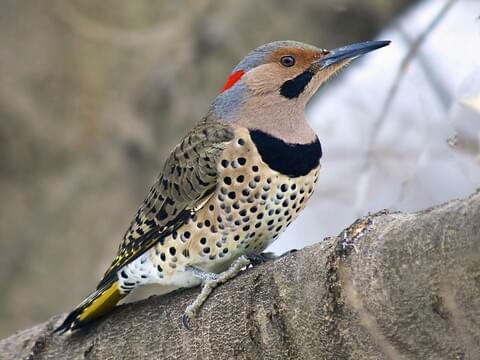
While you can find the northern flicker almost anywhere across the North American continent, the yellow-shafted subspecies are not entirely rare on the eastern plains. However, these northern flickers are not among the common birds on the West Slope.
This ground forager has two subspecies; the yellow-shafted form from the east and the red-shafted form from the west.
Distinguishing the two subspecies can be tricky for some people, but observing them best during flight is the best way to do so. The northern flicker is a sizable bird with long pointed wings and heavily streaked brown and black back.
Underneath it shows a buff shade with black spots; it also has a pale gray head, in addition to its red or bright yellow underwings. Nesting for northern flickers occurs in tree cavities where parents alternate incubating eggs.
Such a bird is among the common birds you can see throughout the year in various habitats across the state, like suburbs, woodlands, and city parks. In these habitats, the northern flickers look for ants, their primary diet when breeding, elderberries, and sunflower seeds in winter.
Many birds love eating sunflower seeds for the high protein and fat content, which is why these seeds attract many different species. You can try planting sunflowers and other native plants if you like to lure many songbirds that find sunflower seeds irresistible.
Wet areas such as swamps and marshes are also home to these woodpeckers. Further, you will encounter the northern flicker drumming, bowing, and chasing to attract mates during the breeding season.
10. White Breasted Nuthatch
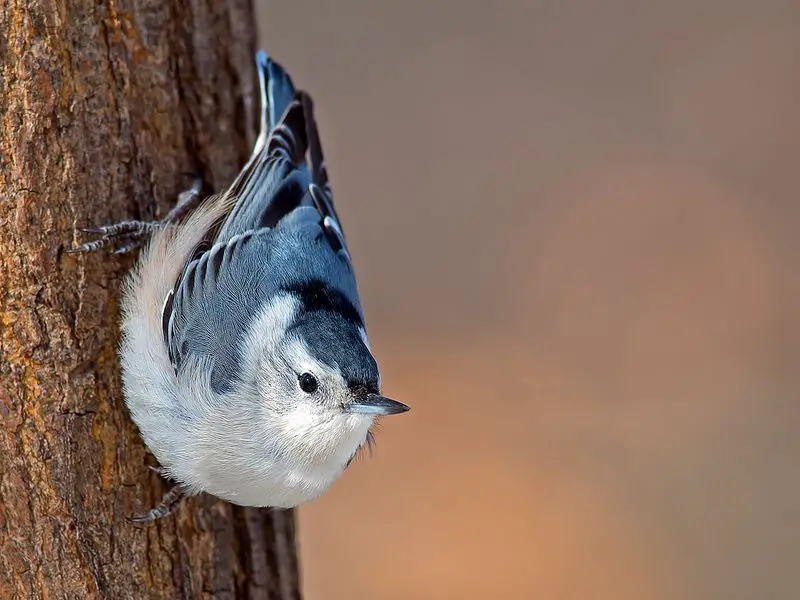
Another year-round bird in Colorado, the white-breasted nuthatch, a member of Family Sittidae, is recognizable with its blue-gray plumage and a conspicuous black eye.
However, white-breasted nuthatches have five subspecies in the United States and Canada, explaining their varying appearances.
The adult male sports a black cap, while the adult female has a gray cap, which can vary depending on the region. Moreover, nuthatches from the west have darker grey flanks.
Such a species is the most sizable of the North American nuthatches and regularly visits bird feeders where black oil sunflower seeds are abundant. The bird has a large head, wide neck, short tail, and bluish to gray wings with chestnut lower flanks and undertail coverts.
White-breasted nuthatch forages sideways and upside down, probing furrows with its bill and creeping along trunks like similar species. You can find this bird dwelling in open woodlands rich in oak and pine trees and primarily takes over tree cavities once used by woodpeckers.
These nuthatches sometimes forage tree bark alone or in pairs, where they eat insects, particularly beetle larvae. Its habitat preference depends on the abundance of mature broadleaf trees, but the bird is rarely in coniferous woodlands.
11. Black Billed Magpie
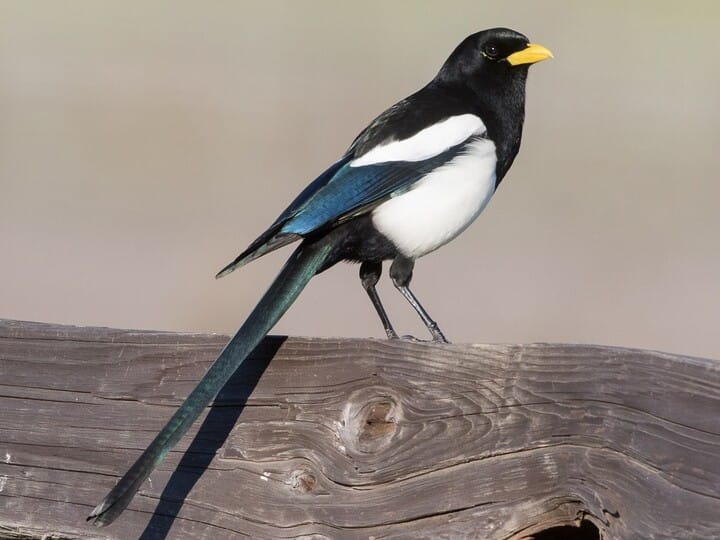
A notorious robber of anything that shines, the black-billed magpie is that bird slightly sizable than the jays and sports an elegant look. It’s reputable for its loud, flashy, and conspicuous behavior and abundant population across the northwestern regions.
Black-billed magpies are identifiable with their broad iridescent black wings and extremely long tails.
Such species have black plumage from the head to the back and the upper breast; its belly is white and has a thick black bill. The large white patches on its outer wings are noticeable when a black-billed magpie is in flight.
Despite its seemingly short wings, it did not stop these magpies from having a graceful flight. Thanks to its long tail that allows the black-billed magpies rapid shifts in direction when flying.
Regarding diet, magpies prefer insects, nuts, eggs, and carrion and migrate in small flocks. Such a corvid can be a very opportunistic feeder, visible in Colorado all year, mostly in riparian and rural areas and open woodlands.
It finds security in inhabiting open habitats where water sources and thickets are nearby for more protection.
Unlike other backyard birds around the state, black-billed magpies use scent in locating food sources. The bird can uncover stored food effortlessly and caches it for later consumption.
Furthermore, this magpie likes making its large, dome-like nest out of thorny sticks and places it in high places not easily accessible to potential predators. What’s even more captivating is the magpie’s unusual behavior in responding to the death of another, like attending a funeral.
As it turns out, upon the death of a magpie, several other magpies will start arriving to sit over the dead body for short periods. Such unusual behaviors are hardly surprising because, like the other corvids, magpies are also very clever creatures.
12. Dark-Eyed Junco
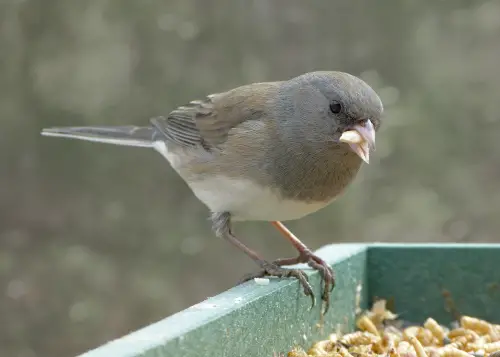
A birder who would love to spot the dark-eyed junco should keep looking across the region in winter. Aside from the snow bunting, this junco is what many observers refer to as the snowbird.
It is about the size of a snow bunting, measuring about six inches long from the bill to its tail.
The edges of this bird’s feathers are aligned rows, creating an impression of streaks that do not exist. It’s just the arrangement of feathers that makes it look that way.
When trying to identify dark-eyed juncos out in the field, you may try looking for the white outer tail plumes and conical pink bill. Such features are what many dark-eyed juncos have in common regardless of geographic variation.
One of the most familiar subspecies is the Oregon junco with its rusty brown plumage, including its sides and flanks. The bird also sports a white belly, a black hood, and a black breast.
The familiar subspecies in Colorado is the gray-headed junco that is gray overall with a darker face and a reddish-brown back. Slate-colored juncos are dominantly gray with white bellies, while pink-sided juncos show bluish-gray hoods, brownish backs, and pinkish-brown flanks.
After returning from their breeding grounds in the colder regions of Canada and Alaska, these birds flock around wood edges or suburban yards.
These areas are where the juncos will forage insects on the grass or seeds on the ground sometime in mid-September, making it an excellent birding time.
Otherwise, these birds breed in coniferous or mixed-coniferous forests, but during winter, they are primarily in backyards, roadsides, open woodlands, and parks.
Roaming Tip: We just can’t run out of birds to show you! Follow our trail through this post — Maryland Birds.
Watch This!
Frequently Asked Questions
Which among the birds in Colorado are native to the region?
Many Colorado birds enjoy the state’s habitats to support their roosting needs. The downy woodpecker, house finch, and western scrub-jay are some of the local birds in the area.
Even the Brown-capped rosy finch and black-capped chickadee are among the native birds in Colorado. The hairy woodpecker, a similar-looking bird to the downy woodpeckers, is also a native species in the state.
What are the winter birds in Colorado?
Bird lovers can enjoy feeding and observing our feather friends in Colorado all year. While you see several avian species even through the colder months, the dark-eyed junco is the most prominent bird during winter.
Dark-eyed juncos are among the small birds in the state, sporting pink bills, and noticeable white outer tail feathers when in flight. Other birds you’ll also see enjoying your bird feeders in winter are the white-breasted nuthatches, downy woodpeckers, and black-capped chickadees.
What backyard birds in Colorado have black and white plumage?
Aside from the downy woodpecker, the similar-looking hairy woodpecker is also visible in Colorado. This woodpecker loves to eat insects from tree bark or on larger branches. You can identify this bird as primarily black with white patches and a patterned head in black and white.
Other birds in Colorado with black and white plumes are the common goldeneye, western grebe, Clark’s nutcracker, and the Red-naped sapsucker.
Conclusion
Colorado’s diverse wildlife is something you must not miss. From the snow-covered heights of the Rocky Mountains to the prairie’s dry grasslands, the region is home to many bird species.
Birders never go home disappointed whenever they visit the state for a pleasurable and enriching wildlife viewing experience. Hopefully, may you find this article a handy guide in your bird-watching journey.
Remember that aside from a bird’s topography, the order and families it belongs to that display similar genetics and behavior can help with better identification.
Keep all these in mind, and in no time, distinguishing these birds will be more entertaining and less confusing, even if you’re a new birder.

